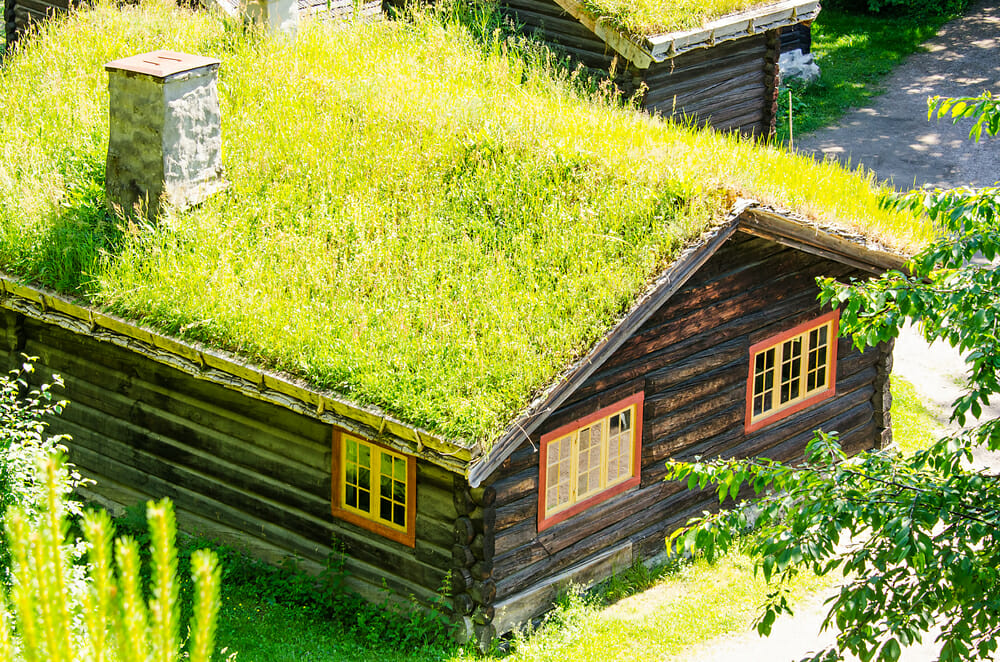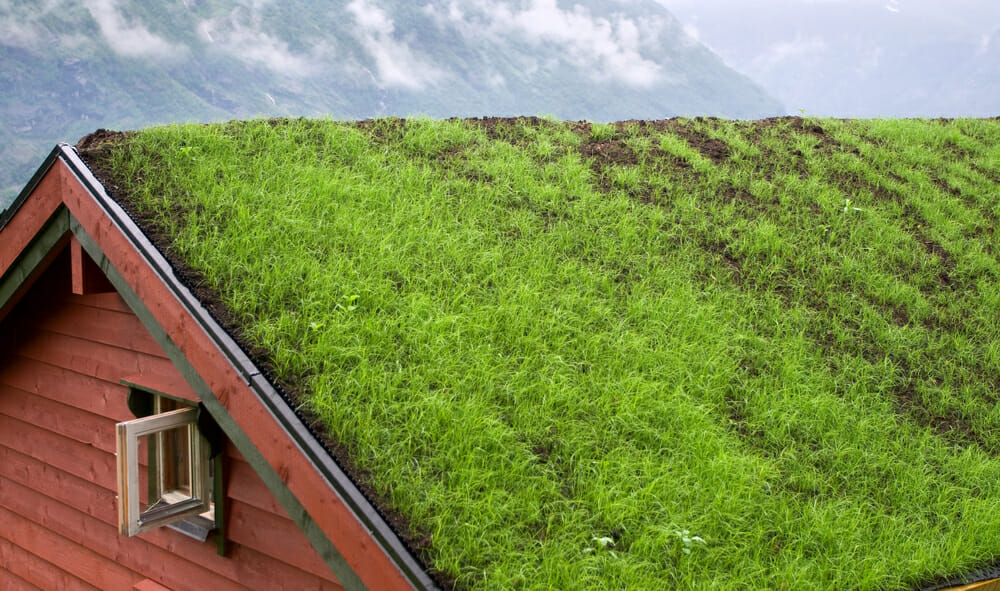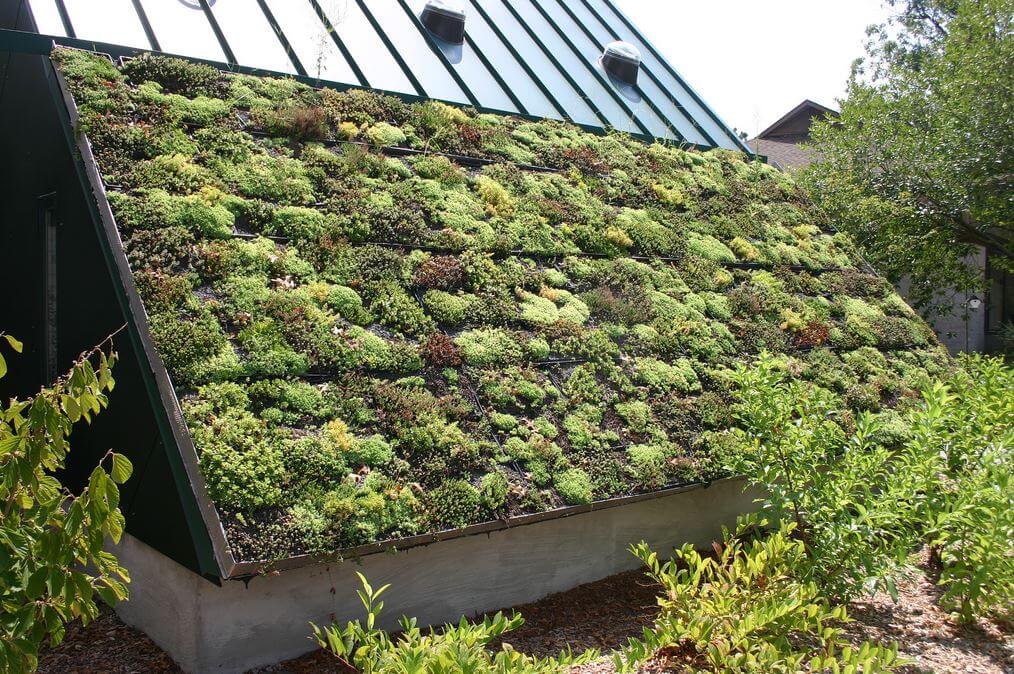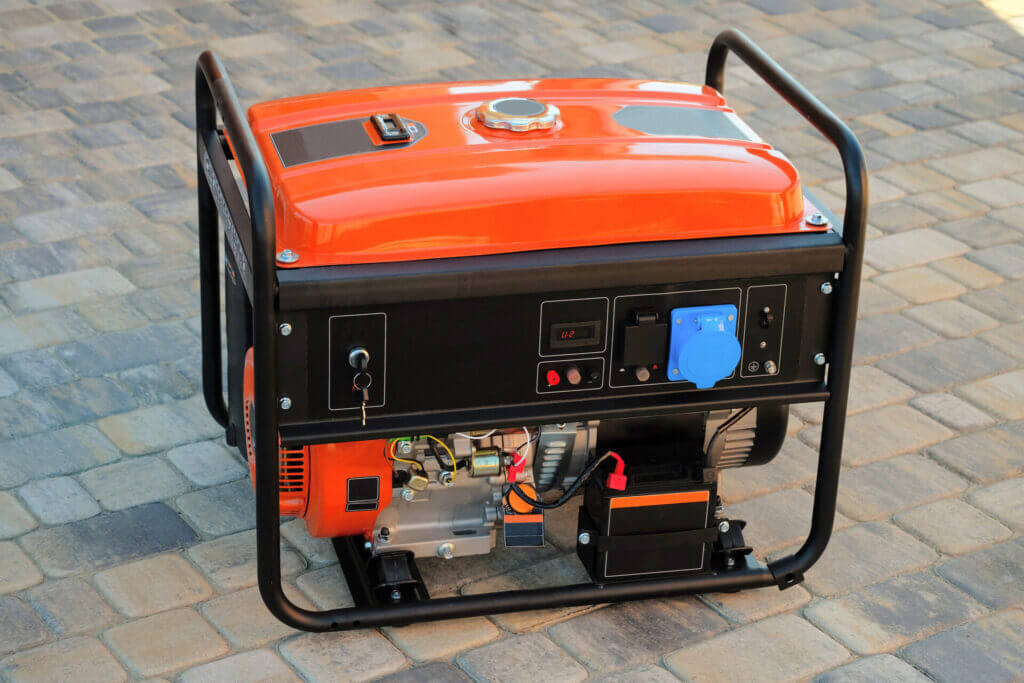Are you doing a roofing project?
Modernize can pair you with three to four pros in your area, so you can compare options and save time and money.
Covering roofs with small plants is becoming increasingly popular, for energy, environmental and aesthetic reasons alike. Here’s an overview of the many benefits creating a green roof confers, along with some suggestions on how to make your own roof greener and more eco-friendly.

Benefits of a Green Roof
Beyond the aesthetic appeal, there are several benefits to having a living roof.
Extend the Life of Your Roof
Conventional shingle roofs generally last only between 15 and 20 years, due to the wear and tear they suffer from daily solar heat, wind damage, and rain. But the greenery system on a green roof provides an extra barrier to better protect your roof from the elements, thereby extending its lifespan.
Lower Heating and Cooling Bills
Green roofs help cool the air through evaporation by providing shade, and by creating a lighter roof compared to dark shingles. Homes that feature planted roofs generally use less energy since less energy is lost through the attic—particularly one that’s not well insulated. A bonus for city-dwellers, green roofs can also help cool the air in a city, by reducing the heat island effect that’s caused by row after row of roofed houses.
Reduce Noise Pollution
According to the International Green Roof Association, green roofs reduce sound reflection by up to 3 decibels and improve sound insulation by up to 8dB. This could greatly improve the quality of life for homeowners who live near airports, industrial parks, or even busy convenience stores or noisy schoolyards.
Reduce Air Pollution and Climate Change
Since plants absorb air pollutants and carbon dioxide, they both filter the atmosphere and remove the carbon dioxide (CO2) that contributes to global warming.
Contain and Filter Rainwater
Green roofs can absorb as much as 90% of the rain that falls on them. The several layers that make up a green roof filter the water and remove pollutants before sending the water to a downspout and eventually back to rivers and streams.
The Two Kinds of Green Roofs: Intensive and Extensive
There are two different kinds of green roofs, and there are different reasons to pick each one.
Find the Right Contractor for Your Roofing Project
Whether you’re ready to begin your project now or need some expert advice, our network of contractors are here to help. With a few simple questions, we’ll find the best local professionals for you
Intensive Green Roofs
An “intensive” roof is like the “living roof” planted on top of a truck factory owned by the Ford Motor Company. It’s very large and planted more deeply, and it provides a nesting habitat for birds, as well as energy and water management benefits. Intensive roof gardens may feature bigger plants, as well as walkways, benches, and other design features. They can be used as recreational spaces, as well as to reduce energy consumption and pollution.
Extensive Green Roofs
An “extensive” roof, by contrast, will be more shallow and won’t be designed for much human traffic. It’s also marked by several layers, though they may not be as deep as what you’d find on an intensive roof. These layers include:
- a water-proof membrane to protect the roof structure
- root-resistant waterproofing
- a drainage layer of pebbles or some composite material
- several inches of growing medium, which is what supports the plants
- hardy, short, low-maintenance plants like sedum, chives, and delosperma
These layers of material act like a natural sponge when rain falls, absorbing water and protecting the roof. The layers also filter the water. By the time it gets to the drain, it has been scrubbed of particles, soot, and other pollutants.

An intensive rain garden should be very low-maintenance. It requires weeding only a couple of times per year, and it needs to be watered only in the event of a drought. You can add your plants individually, or plant a pre-vegetated, pre-seeded mat or blanket that resembles lawn turf. You can plant to attract specific insects, like butterflies, or focus on plants native to your region. Some seed suppliers offer green roof seed mixes. These are formulated to deal with the hotter, drier conditions that usually prevail on a rooftop.
How Do I Know if My Roof Can Support a Roof Garden?
You could be living underneath the ideal spot for a garden. One way to tell? If your roof is flat or sloped at no more than 10 to 30 degrees (although expert opinions on this differ). However, a steeply pitched roof just won’t work.
To support growing conditions, your roof should receive a fair amount of direct sunlight. It can’t be too shaded by trees. If your roof is too shady for solar panels, it won’t support a roof garden, either.
Finally, green roofs weigh more than conventional roofing. Make sure your home can structurally support the added weight of the garden, especially after it rains. When fully saturated, four inches of a green roof may weigh about 27 pounds per square foot — much heavier than regular shingles.
Find the Right Contractor for Your Roofing Project
Whether you’re ready to begin your project now or need some expert advice, our network of contractors are here to help. With a few simple questions, we’ll find the best local professionals for you
Reviews from Real Homeowners
Welcome to Homeowner Resources! We are the Modernize blog. Modernize pairs more than 3 million homeowners a year with pre-vetted contractors in their area. This blog started because we believe homeowners should know everything about their homes, from how their HVAC works to which front door colors they might love. On Homeowner Resources, you can find information on every part of your home, right down to how you can negotiate with contractors to get the best price. Here's more about the blog.
Need a contractor? Learn more about how Modernize finds the right pro for you.



